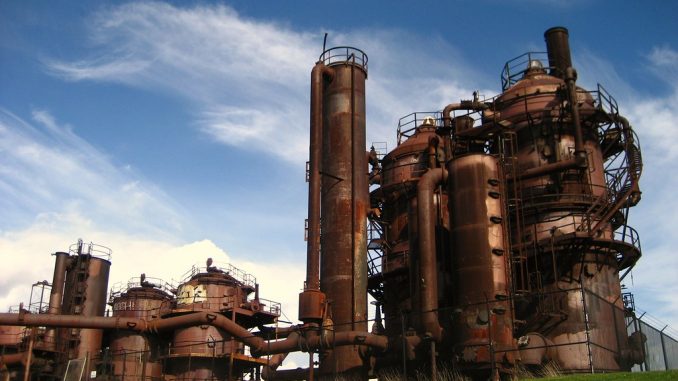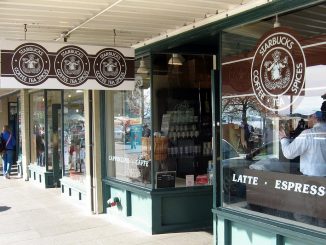
Located on the north shore of Lake Union, Gas Works Park, in Seattle, Washington, is an oasis in the city that was once the site of the Seattle Gas Light Company coal gasification plant. Opened to the public in 1975, the 21-acre (8.5-hectare) park offers vast green space to relax, waterfront views of the lake, and remnants of the last operating coal gasification plant in the United States. The gasification plant and surrounding property was purchased by the City of Seattle with the intent purpose of turning it into a park in 1962.
From 1906 to 1956, the coal gasification plant provided gas to a Seattle that is all but lost to today’s modern city of the Pacific Northwest. When it opened as the Lake Station Gas Manufacturing Plant, it was the largest private utility that existed in the city, and as the city grew around the plant, the name was changed to reflect that growth. It has been known by many names throughout the years and was the Seattle Lighting Company till 1930 when it became the Seattle Gas Company. Though the gas produced was originally intended for lighting, it was later used for cooking and heating throughout the city.
By 1954, the plant served Seattle, Renton, Kent and Tukwila, but was already on a decline from its 1940 peak. The gasification plant was thankfully only able to hold on only a few more years till Seattle switched to less expensive and more environmentally friendly natural gas.
Richard Haag Associates was hired by the Seattle Park Board in 1970 to perform an on-site evaluation of the site and to present a plan for the eventual design of the park. After some research Haag learned that the site contained the last gas works in the United States, and thus a unique opportunity for preservation and renovation. His vision for preserving parts of the plant for its “historic, esthetic, and utilitarian value” were briefly debated by the public, but unanimously approved by the Park Board with very little delay. The recycling and re-using of structures already in place is a very Seattle thing to do, and falls right in line with how the city sees itself even to this day.
Gas Works Park was originally named after Myrtle Edwards, a Seattle alderwoman who led in the acquisition of the site but died in a car crash before its opening. It would have probably been known as Myrtle Edwards Park today, but her family concluded in 1972 that the inclusion of items from the plant would not been appreciated by, and should not be part of Myrtle Edwards lasting memory.
Please visit the Seattle Parks Department for more information about Gas Works Park, and other attractions they operate throughout the city.
Gas Work Park Facts
- Seattle based landscape architect Richard Haag is the only person to have received the American Society of Landscape Architects Award for design excellence, twice.
- The park has an incredibly valuable 1,900 feet (580 m) of Lake Union shoreline.
- Gas Works Park features an artificial kite-flying hill with sundial created by local artists Chuck Greening and Kim Lazare.
- More than a decade after its nomination, Gas Works Park was added to the National Register of Historic Places on January 2, 2013.
- In 1976, a smaller park, then known as Elliott Bay Park, was renamed Myrtle Edwards Park.
- The city paid $1.34 million for the property.
- The conversion from plant to park was completed by Daviscourt Construction Company of Seattle.
- The park is the starting point for Seattle’s World Naked Bike Ride.
- Gas Works Park and Lake Union have for many years been one of only two places in Seattle that host public fireworks on the 4th of July.


